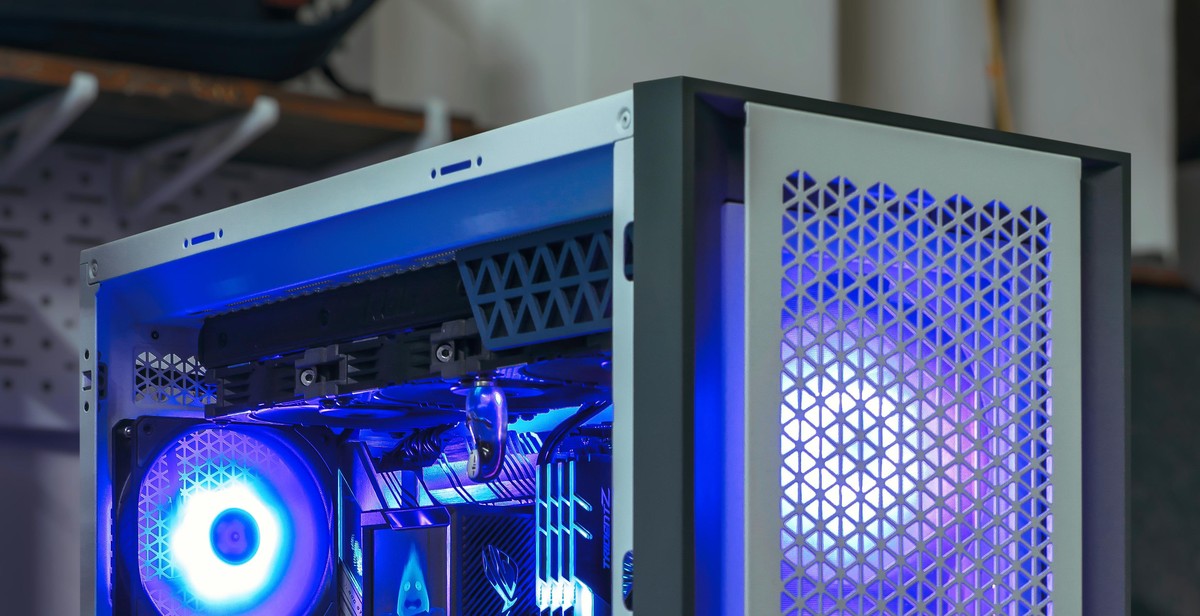Exploring the Intersection of Bots and Blockchain Technology
As technology continues to advance, we are seeing more and more innovative solutions being developed to address various challenges and problems. Two of the most exciting technologies that have emerged in recent years are bots and blockchain. While these technologies are often talked about separately, there is actually a lot of potential for them to work together in powerful ways.
What are Bots?
Bots are automated software programs that are designed to perform specific tasks. They are often used to streamline processes, increase efficiency, and reduce costs. Bots can be programmed to perform a wide range of tasks, from customer service and marketing to data analysis and security.
What is Blockchain Technology?
Blockchain is a distributed ledger technology that allows for secure, transparent, and immutable transactions. It was originally developed to support cryptocurrencies like Bitcoin, but it has since been applied to a wide range of industries and use cases. Blockchain technology has the potential to revolutionize many industries by providing a secure and transparent way to store, manage, and share data.
In this article, we will explore the intersection of bots and blockchain technology, and look at some of the ways in which these two technologies can work together to create powerful solutions.

What are Bots?
Bots, short for robots, are software applications that automate tasks that are usually performed by humans. Bots can be programmed to perform a wide range of tasks, from simple ones like sending automated messages to complex ones like analyzing data and making decisions.
Types of Bots
There are various types of bots, each designed to perform a specific task. Some of the most common types of bots include:
- Chatbots: These bots are designed to interact with humans via messaging platforms or voice assistants. They can answer questions, provide information, and even perform tasks on behalf of the user.
- Web crawlers: These bots are used to scan websites and collect data for various purposes, such as search engine optimization or market research.
- Social media bots: These bots are designed to automate social media tasks, such as liking posts, following users, and posting content.
- Trading bots: These bots are used to automate trading activities in financial markets, such as buying and selling assets based on predefined rules.
How Bots Work
Bots work by following a set of predefined rules or algorithms. These rules dictate how the bot should behave in different scenarios. For example, a chatbot may be programmed to respond to specific keywords or phrases with predefined messages.
Bots can be programmed using various programming languages, such as Python, Java, or JavaScript. They can also be built using bot-building platforms like Microsoft Bot Framework or Dialogflow.
Benefits and Risks of Bots
Bots offer several benefits, including:
- Efficiency: Bots can perform tasks faster and more accurately than humans, which can save time and reduce errors.
- 24/7 availability: Bots can work around the clock, providing services to users at any time.
- Cost savings: Bots can reduce labor costs by automating tasks that would otherwise require human labor.
However, there are also risks associated with bots, such as:
- Security risks: Bots can be used for malicious purposes, such as spreading malware or phishing attacks.
- Privacy concerns: Bots may collect and use personal information without the user’s consent, raising concerns about data privacy.
- Job displacement: Bots may replace human workers, leading to job losses and economic disruption.

What is Blockchain Technology?
Blockchain technology is a decentralized digital ledger that records transactions across a network of computers. Each block in the chain contains a number of transactions and every time a new transaction occurs, it is added to the chain. The decentralized nature of blockchain technology makes it difficult for any single entity to control the network, making it more secure and transparent.
Definition and History of Blockchain
Blockchain technology was invented by an anonymous person or group of people under the name Satoshi Nakamoto in 2008 to serve as the public transaction ledger of the cryptocurrency, Bitcoin. Since then, blockchain technology has been adapted for use in various industries.
Blockchain technology is essentially a digital ledger that records transactions in a secure and transparent manner. It is decentralized, which means that there is no central authority or intermediary controlling the network. Instead, it is maintained by a network of computers that work together to validate transactions and add them to the blockchain.
How Blockchain Works
Blockchain technology works using a combination of cryptography and consensus algorithms. When a transaction is made, it is verified by a network of computers known as nodes. Once the transaction is verified, it is added to a block of transactions. Each block is linked to the previous block, forming a chain of blocks, hence the name blockchain.
Once a block is added to the blockchain, it cannot be altered or deleted. This makes the blockchain an immutable ledger, which is one of its key features. Additionally, because the blockchain is decentralized, it is more secure and transparent than traditional centralized systems.
Benefits and Risks of Blockchain
One of the key benefits of blockchain technology is its decentralization, which makes it more secure and transparent. Additionally, because the blockchain is immutable, it is tamper-proof, which makes it ideal for recording sensitive information such as financial transactions.
However, there are also risks associated with blockchain technology. For example, because the blockchain is decentralized, there is no central authority to regulate it, which can lead to issues such as fraud and hacking. Additionally, because the blockchain is still a relatively new technology, there are still many unknowns and uncertainties surrounding its long-term viability and potential risks.

The Intersection of Bots and Blockchain
Bots and blockchain technology are two of the most exciting innovations in the tech industry today. While they may seem like two completely different concepts, they actually share a lot of similarities and can greatly benefit from each other.
How Bots Can Benefit from Blockchain Technology
Bots are becoming increasingly popular in the business world as they offer a range of benefits, such as increased efficiency, cost savings, and improved customer service. However, bots are not without their limitations, particularly when it comes to security and transparency.
Blockchain technology can help address these challenges by providing a secure and transparent platform for bots to operate on. By using blockchain, bots can be programmed to operate within a secure and decentralized network, which can help prevent unauthorized access and ensure that all transactions are transparent and traceable.
How Blockchain Can Benefit from Bots
Blockchain technology is known for its ability to provide a secure and transparent platform for transactions. However, one of the challenges of blockchain is that it can be slow and expensive to operate.
Bots can help address these challenges by providing a faster and more efficient way to process transactions on the blockchain. By using bots to automate the process of verifying transactions, blockchain networks can operate more efficiently and at a lower cost.
Challenges and Limitations of Combining Bots and Blockchain
While the combination of bots and blockchain technology offers many benefits, there are also several challenges and limitations to consider.
- One of the main challenges is that bots are still relatively new technology, and there is a lack of standardization in terms of how they are built and operated.
- Another challenge is that blockchain technology is still in its early stages of development, and there are many technical issues that need to be addressed before it can be widely adopted.
- Finally, there is the challenge of integrating bots and blockchain technology into existing systems and processes, which can be complex and time-consuming.
Despite these challenges, the intersection of bots and blockchain technology holds great promise for the future of the tech industry. By working together, these two technologies can greatly improve the efficiency, security, and transparency of business operations.

Use Cases for Bots and Blockchain
The intersection of bots and blockchain technology has opened up numerous possibilities for businesses across various industries. Here are some of the most promising use cases:
Supply Chain Management
One of the most significant benefits of using bots and blockchain technology in supply chain management is increased transparency and efficiency. With blockchain, businesses can track the movement of goods from the point of origin to the point of consumption. Bots can automate the tracking process and provide real-time updates on the location and condition of goods. This can help businesses identify and address bottlenecks, reduce wastage, and ensure timely delivery of products.
Identity Verification
Identity verification is another area where bots and blockchain technology can be used to great effect. By leveraging blockchain’s decentralized and immutable nature, businesses can create secure and tamper-proof digital identities for their customers. Bots can be used to automate the verification process, reducing the need for manual intervention and minimizing the risk of fraud.
Financial Transactions
Bots and blockchain technology can also be used to streamline financial transactions. With blockchain, businesses can eliminate intermediaries and reduce transaction costs. Bots can automate the payment process, ensuring that transactions are executed quickly and accurately. This can help businesses save time and money, while also improving customer satisfaction.
Smart Contracts
Smart contracts are self-executing contracts with the terms of the agreement between buyer and seller being directly written into lines of code. They allow for the automation of complex business processes and can be used across various industries. Bots can be used to execute smart contracts, ensuring that the terms are met and the transaction is completed without the need for human intervention.
| Use Case | Benefits |
|---|---|
| Supply Chain Management | Increased transparency and efficiency, reduced wastage, and timely delivery of products. |
| Identity Verification | Secure and tamper-proof digital identities, reduced risk of fraud. |
| Financial Transactions | Elimination of intermediaries, reduced transaction costs, improved customer satisfaction. |
| Smart Contracts | Automation of complex business processes, reduced need for human intervention. |

Future of Bots and Blockchain
The intersection of bots and blockchain technology presents a fascinating and promising future for businesses and individuals alike. The potential for disruption and innovation is enormous, and we are already seeing the emergence of exciting new trends and developments in this space.
Potential for Disruption and Innovation
The use of bots in conjunction with blockchain technology can enable new levels of automation, transparency, and security. Bots can automate a wide range of tasks, from customer service to financial transactions, while blockchain technology provides a secure and transparent ledger for tracking and verifying these actions. This combination has the potential to disrupt industries and create new opportunities for innovation.
Ethical and Legal Implications
As with any emerging technology, there are ethical and legal implications to consider. The use of bots in certain industries, such as finance and healthcare, raises concerns about privacy and security. Additionally, the use of blockchain technology may require new legal frameworks to ensure compliance and protect consumers.
Emerging Trends and Developments
One emerging trend in the intersection of bots and blockchain is the use of decentralized autonomous organizations (DAOs). These are organizations that operate on a blockchain and are governed by smart contracts, which are self-executing contracts with the terms of the agreement between buyer and seller being directly written into lines of code. Another trend is the use of bots in the supply chain to automate and track the movement of goods, from production to delivery.
In conclusion, the future of bots and blockchain is bright, with the potential for disruption and innovation across industries. However, it is important to consider the ethical and legal implications of these technologies and to stay up-to-date on emerging trends and developments.
